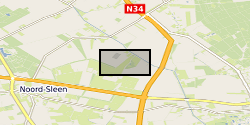GEUS
Type of resources
Topics
Keywords
Contact for the resource
Provided by
Years
Formats
Representation types
Update frequencies
-

On December 1, 1965, an underground blowout during an exploratory drill with a catastrophic outcome occurred near Sleen, The Netherlands. During approximately 2.5 months, near-continuous leakage of large amounts of natural gas was released into the subsurface. After the blowout, the local drinking water production company installed a network of groundwater monitoring wells to monitor for possible adverse effects on groundwater quality at the blowout site. Today, more than 50 years after the blowout, the groundwater is still impaired. Data has been correlated with previously published data by Schout et al. (2018) covering description of geology and well depths. During October 2019 we sampled from 12 groundwater wells covering: - Inorganic parameters (hydrocarbons, anions, cations, DOC, alkalinity, nitrate and ammonium) - DNA (quantification of total bacteria by qPCR 16S, aerobic methane oxidation by qPCR pmoA, and anaerobic methane oxidation by qPCR mcrA) The dataset was created within SECURe project (Subsurface Evaluation of CCS and Unconventional Risks) - https://www.securegeoenergy.eu/. This project has received funding from the European Union’s Horizon 2020 research and innovation programme under grant agreement No 764531
 NERC Data Catalogue Service
NERC Data Catalogue Service